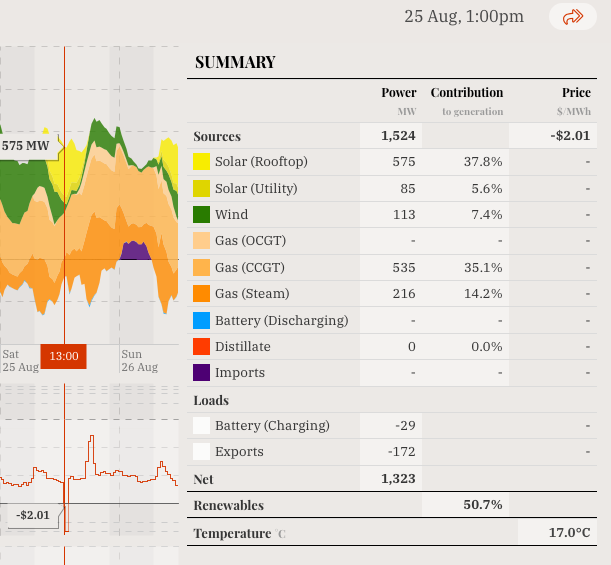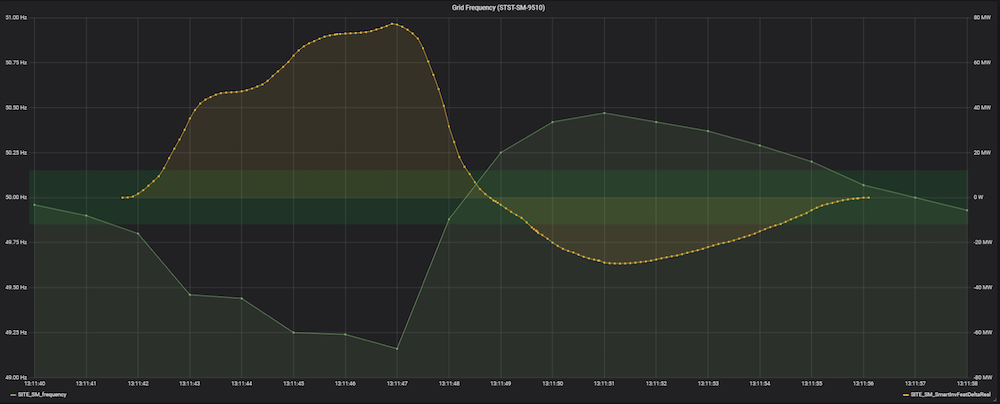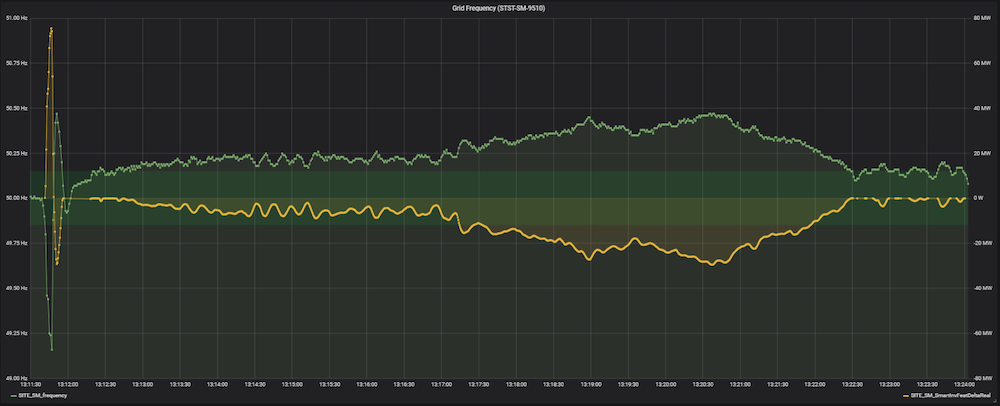Yep.
Alcoa has an Aluminium smelter there, also Norway.
Damn white people steeling our jobs
New energy minister is an anti-windfarm campaigner. New environment minister is a former mining industry lawyer.
If Morrison was supposed to be the moderate one, i hate to think what Dutton would have done.
Welcome to the Liberal Party unmasked for the lobbyists they are.
But it’s alright because I hear Morriston is a devout Christian who has good Christian values and all Christians have the same values.
Thanks goodness they’re starting to listen to the electorate on renewables and climate change…
That’s why I was agrèeing with 1408.
Current policies are inflicting pain for no possible ecological benefit just so politicians can suck up to the religious fanatics in the green movement to get their votes.
Think your medications need adjustment.
Religious fanatics in the green movement ???
Anyone who doesn’t agree coal is the only answer when it comes to generating electricity. Those who do will sometimes concede that nuclear is another option but only because they know it’s never going to happen.
Never go full sorfed 
I never said coal is the only answer, not enough water for hydro and never will be because the Greens hate dams. The sun doesn’t shine at night or in inclement weather.
Gas reserves in Victoria which are not already in use, Bass Strait is committed to Melbourne, the Otway Basin has long term contracts with South Australia and and any other reserves are out of the question after have been locked up by Daniel Andrews.
Wind is inconsistent/unreliable or non-existent for long periods, refer the wind drought July 2017, or if the climate scientists in whom you hold in great esteem say the wind is going to decrease with the advent of Global Warming.
The only other reliable alternative is nuclear and we all know the religious fanatics on the Left will never allow that.
Batteries are an option, but as the 100Kw Elon Musk wonder battery that cost $150 million to supply a state of 1,500,000 people for 3 minutes 37 seconds it may work out to be a little costly to maintain supply for a full 3 days (minus of course the solar input) with the 45% target in operation in S.A. and touted by Daniel Andrews in his pre-election ramblings
Over to you for your solution on how to keep sufficient supply to avoid massive blackouts and I haven’t even included the 14,000,000 population growth over the next 30 years, or the hoped for conversion of the 18,800,000 vehicles in Australia to electric power.
Not enough water for hydro but “the existing five power stations in the Latrobe Valley use 125 billion litres of water, equivalent to a third of Melbourne’s water use annually” (source: https://environmentvictoria.org.au/our-campaigns/safe-climate/coal-water-use/),
Plenty available for the pumped storage option though.
You should read up on it. It’s natures battery option and can be built at a large scale or small scale.
You can watch it too.
Isn’t the whole point of a national renewable energy network which uses transient sources like solar and wind that in a country as vast as Australia that it is always windy or sunny somewhere?
So it’s just a matter of building the infrastructure that allows for the transport of power to where it is needed.
If only we had some sort of scientific research organisation that could look at ways to use Australia’s unique environmental conditions to develop renewable energy options that would provide cheap, reliable energy as well as economic benefits and allow us to phase out inefficient polluting systems at the same time…
Wind drought. That’s a term?
The counter argument is that Australia’s grid requirements are now largely defined by short bursts of high wattage demand in late summer due to air conditioning. Coal is great for cheaply producing huge volumes of power yet is very slow to respond to changing demand. It’s not really the answer to meeting those changing grid requirements of fairly flat MW/h usage and rising peak MW demand. Renewables can probably largely replace coal without a huge price premium when it comes to trundling along producing average power use. Gas or storage is likely to be required to meet the peak usage either way. It’s not that hard to envision renewables plus storage replacing coral plus gas.
Think you mean coal and not coral.
Qld will need a replacement for their coral though, once it goes so will half their tourism dollars
I’m sure If the libs saw a profit in burning coral they would.
So, there was a huge load shedding event that effected all of the national grid. Not SA though because the battery saved them while transmission was fixed.
“ On first day as PM, Morrison learns difference between Big Battery and Big Banana
Giles Parkinson 27 August 2018
Share
On his first day as prime minister, Scott Morrison got to test his theory that the Tesla big battery in South Australia is about as useful as the Big Banana in New South Wales. It didn’t work out well.
Remember this?
“I mean, honestly, by all means have the world’s biggest battery, have the world’s biggest banana, have the world’s biggest prawn like we have on the roadside around the country, but that is not solving the problem,” Morrison mocked in July last year, just a few months after waving a lump of coal around parliament.
Well, it turns out that the Tesla big battery is more useful than the Big Banana in Coffs Harbour, or even the Big Prawn near Ballina, judging by the impacts of a dramatic loss of two transmission line on Saturday that caused major power outages in NSW and Victoria.
The Tesla big battery, also known as the Hornsdale Power Reserve, was able to play a key role in helping keep the grid stable and the lights on in South Australia on Saturday, in its biggest threat since the 2016 blackout. It did solve a problem.
Morrison’s Big Banana, on the other hand, wasn’t able to lift a finger to help customers in NSW. Such a shame they didn’t have a battery to help them.
Here’s what happened.
On Saturday, a dramatic loss of two major transmission lines just after 1pm – which the Australian Energy Market Operator blamed on lightning strikes – resulted in major load shedding in NSW and Victoria, including whole suburbs in Sydney and Newcastle, and elsewhere, and even two pot lines at the Tomago smelter in the Hunter Valley.
The grids in South Australia or Queensland were both “islanded” by the explosion, which meant they were cut off from the main grid, but neither state lost power.
AEMO says NSW was forced to shed 724MW of load and Victoria shed 280MW when lines connecting the NSW and Queensland grids were suddenly lost.
That loss of power – and subsequent load shedding – roughly equated to the amount of electricity that the two states were importing at the time – NSW from Queensland, and Victoria from both its northern link and from South Australia.
It’s a normal reaction – neither state has anything that can react instantaneously to a loss of power, so load is shed to keep the rest of the grid stable and pull the frequency back into line. (You can read some more detail in this as it happened report on Watt Clarity here).
AEMO made note that these outages had nothing to do with any loss of generation – and it was interesting to note that no generator: coal, gas, wind or solar – tripped off as a result of the transmission failure.
The Coalition government, however, couldn’t resist the opportunity to display more of its idiocy and ideology over energy.
“The system has heightened vulnerability because of the reliance on interstate and unreliable power,” Resources Minister Matt Canavan told The Australian. “More investment in coal, gas or hydro would firm up the system, create more supply and bring down prices.”
Dear minister, it doesn’t matter how much coal, hydro or gas you have in the system, if the transmission lines blow up, you are going to have problems. Are you suggesting the end of the National Electricity Market, and no state should import or export power?
But that takes us to the link between the big battery and Morrison’s big banana.
 Just before the incident, South Australia was sourcing around 43.4 per cent of its demand from solar (mostly rooftop solar) and another 7.4 per cent from wind (so more than 50 per cent variable renewables), but it operated without issue and its local grid was “synchronised” with Victoria’s about 25 minutes after the outage.
Just before the incident, South Australia was sourcing around 43.4 per cent of its demand from solar (mostly rooftop solar) and another 7.4 per cent from wind (so more than 50 per cent variable renewables), but it operated without issue and its local grid was “synchronised” with Victoria’s about 25 minutes after the outage.
It seems that the Hornsdale Power Reserve, also known as the Tesla Big Battery, stepped in to help ensure there were no ill effects in South Australia from what AEMO was describing at the time as a “power system emergency”.
Indeed, it was the biggest “contingency” event since the Tesla big battery began operations in December last year, and likely one of the biggest threats to the grid and supply since a series of tornadoes caused the September 2016 blackout. It was the first time the state was “islanded” since that blackout.
When frequency plunged dangerously through a 49.80 Hertz trigger point to below 49.25Hz and a low of 49.18Hz after the lightning strike, the battery sprung into action.
No load-shedding occurred in South Australia, partly due to the response of the battery, delivering an immediate net increase of 84MW to the grid, when South Australia’s frequency dipped below that crucial 49.2Hz.
Over the next 25 minutes, HPR continued to provide frequency support as South Australia operated as an island, including providing downward frequency support (net charging) when the suddenly surged after the separation, and went up to an equally dangerous 50.47Hz.
 These graphs above and below highlights what happened. Note that this shows one second periods, but the response was actually faster than that. The top graph shows the change in frequency and the battery response.
These graphs above and below highlights what happened. Note that this shows one second periods, but the response was actually faster than that. The top graph shows the change in frequency and the battery response.
The one below shows a longer time frame from the initial disturbance, and how the battery kept the changes in check.
This versatility and speed was essential to keep the network in South Australia steady, as the grid over-corrected – which often happens when the grid relies on traditional slow and lumbering machines.
What Morrison and Co should recognise is that the response highlighted the great flexibility of the Tesla battery, delivering a variety of crucial services simultaneously during this short period of time. It actually Does Something.
The fast response to the contingency contributed to returning supply to the nominal bands, and once there delivered local frequency support to South Australia while islanded from the rest of Australia. A scenario not seen since the blackouts in September 2016.
In addition, the battery was able to charge at negative energy prices in the market during this time, highlighting the monetary value for the asset owners in addition to the benefit to the grid with fast response.
So, let’s cast back to Morrison’s comments of last year.
“I don’t care if it’s wind, coal, the world’s biggest battery, but you’ve got to measure it on its contribution, and it doesn’t measure up to a big solution.”
And he went on to say: “30,000 SA households could not get through watching one episode of Australia’s Ninja Warrior with this big battery. So let’s not pretend it is a solution”.
But every household in South Australia was able to watch whatever it wanted on Saturday. Without the battery, as much as 84MW may have been lost. It was the households in NSW – with five major coal generators off-line due to repairs – that had to cop the outages.
While the big battery was providing a solution to an incident in South Australia, NSW had nothing in its generation fleet to respond quickly enough to provide a solution to NSW customers.
If NSW had a few batteries like the Tesla big battery he mocked, then the lights in the suburbs and the smelter might have stayed on. Or as the battlers “whose side he is on” might have asked, where the ■■■■■■ hell was the NSW big battery?
The speed and versatility of the Tesla big battery, as illustrated on Saturday, and in numerous occasions previously, has both surprised and delighted network owners and market operators. It can do things that cannot be matched by coal, gas or hydro generators, or even Big Bananas.
Perhaps this event will show that he would be wise to try and reset the silly debate about battery technology being measured by how long it can allow people watching a TV show and more how quickly it can respond to key the grid connected.
Sadly, though, this is a man whose chief of staff is a former deputy CEO of the Minerals Council, and who has just appointed one of the country’s most prominent critics of wind energy as the new energy minister.“
